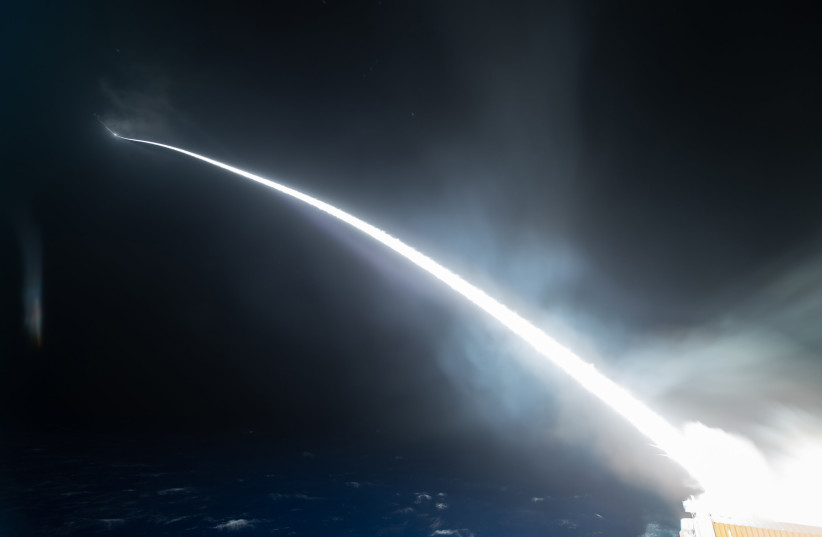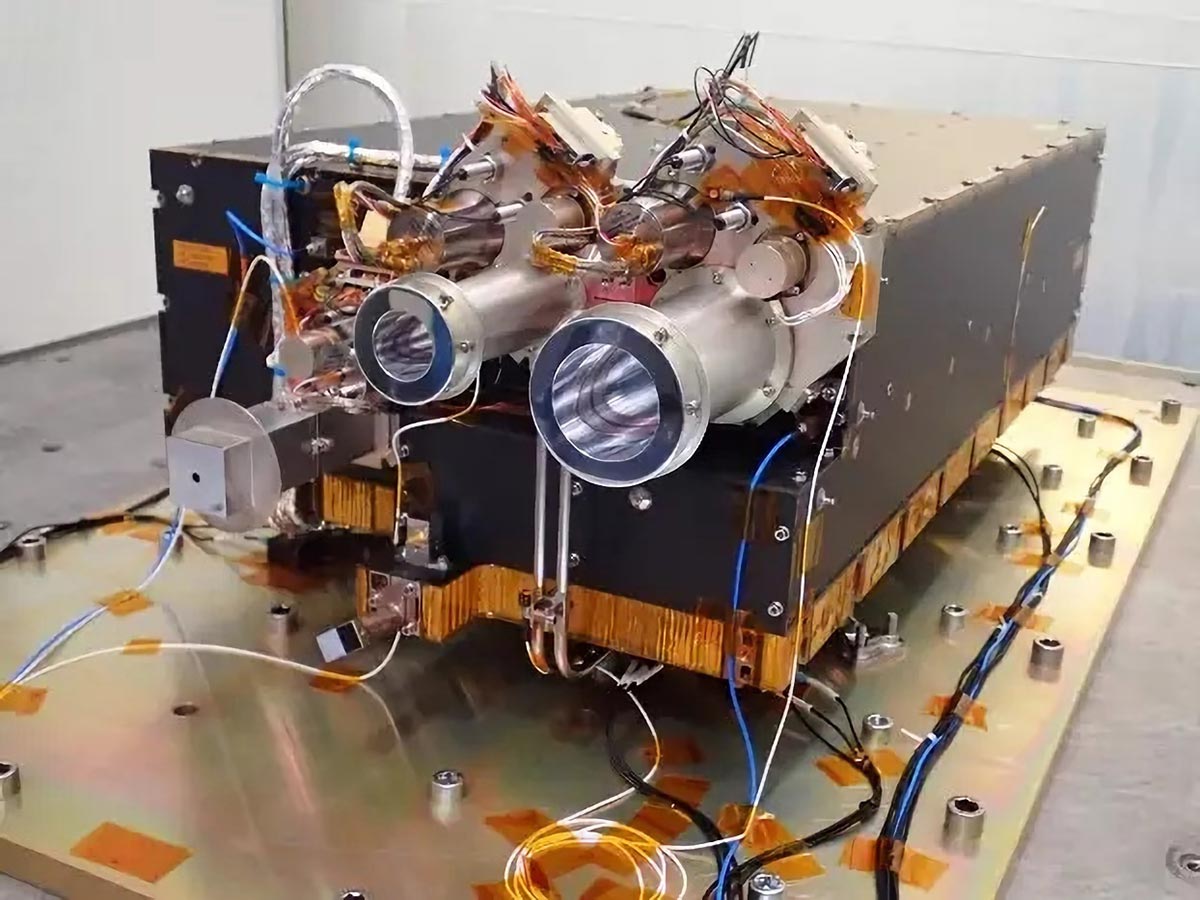Mars Perseverance rover finds organic molecules that could indicate life
New findings could indicate an environment hospitable for life was once on the Red Planet, but more research is needed.
NASA's Perseverance rover found signs of organic compounds that could indicate there was once life on Mars or at least an environment hospitable for life, according to a new study published in the peer-reviewed journal Science on Wednesday. Scientists will need to wait for the rocks to be brought to Earth in order to determine the compounds' orgins.
The new discoveries were made by the rover in the Jezero Crater, an area targeted by NASA as it appears to contain a river delta and a lake and could be the best bet for scientists to learn about the geological and water history of the Red Planet.
The minerals and possible organic compounds mentioned in the new study were found using SHERLOC, or the Scanning Habitable Environments with Raman & Luminescence for Organics & Chemicals instrument.
SHERLOC uses a number of tools, including a Raman spectrometer which uses a type of fluorescence to search for organic compounds and see how they're distributed in a material.
The study covers two layers of rocks: the Seitah formation and the Maaz formation, according to Inverse.

The Seitah formation is a layer of cooled magma and the oldest igneous rock on the crater floor. In the formation, the rover found traces of minerals called carbonates along with garins of olivine, a greenish volcanic material. Lead author Eva Scheller explained in a tweet that the carbonates likely formed when liquid water flowed through and reacted with the igneous rock.
Between the olivine grains, the team also found traces of amorphous silicate and phosphate which is a key building block for life, although it isn't a definite sign of the presence of life.
The Maaz formation is a basalt lava flow which is younger than the Seitah formation. The rover found salts called perchlorates in this layer, a salt which is commonly gound on Mars surface.
“It's basically a very oxygen-rich chemical that is not common to be formed on Earth," Scheller told Inverse. “Perchlorate formation in liquid water is quite rare on Earth, if it even happens. This is a very strange type of water chemistry, and we don't know a lot about it, because we don't see it very often on Earth.”
While the signs found in the Seitah could indicate that there was once an environment hospitable for life, the Maaz layer is less likely to have hosted any life as perchlorates aren't usually hospitable.
“This kind of highly oxygenated state, generally, is not great for preserving signs of life. So I suppose there can always be a possibility, but it's probably not the number one spot you would look for habitable conditions,” said Scheller to Inverse. “That said, we only have one data point, which is the chemistry of fluids on Earth.”
Life On Mars? Perseverance Found Organic Molecules!
However, in both layers, SHERLOC found small amounts of molecules called aromatic organic compounds, including some which may be similar to benzene. While these may indicate the presence of life on Mars, they may also have been created without the presence of life and further analyses will have to be conducted once the samples are brought to Earth.
"Something unique about @SHERLOC2020 is that its luminescence wavelength is sensitive to specific types of organic compounds. We saw many signals that look like they could be organic compounds together with these cool water environment minerals," explained Scheller in a tweet.
"This could mean that liquid water was involved in transporting, preserving, or forming the organics on ancient #Mars. We will have to study what exactly these are in future with the 6 samples of these rocks that were collected with @NASAPersevere to be sent back to Earth!"
In an article by Imperial College London, Bethany Ehlmann, co-author of the paper, professor of planetary science, and associate director of the Keck Institute for Space Studies, noted that “the microscopic compositional imaging capabilities of SHERLOC have really blown open our ability to decipher the time-ordering of Mars’s past environments."
The study involved 67 people from a number of institutions, according to Scheller.
Additional new studies shed light on movement of water on Mars surface
Two additional studies on findings from the Perseverance were published on Wednesday as well.
While the rover's Mastcam-Z instrument was able to provide strong evidence for a type of river delta called a Gilbert delta, it was unable to find any sedimentary rock which could have preserved ancient signs of life, according to a study published in the peer-reviewed journal Science Advances.
The Mastcam-Z team noted that any sediments which may have been in the crater at one point were either buried by magma or impact processes, eroded away or a combination of both. That lack of sediment could indicate that water wasn't on the surface for long.
The rover's PIXL instrument (an x-ray fluorescence microscope) found more evidence that the rocks interacted with water, noting that the interaction was either conducted at a relatively low temperature or only took place over a short time or with a small amount of water, according to a study published in the peer-reviewed journal Science Advances.
The interaction with water likely happened over three stages, which each stage having provided "challenges and opportunities for habitability, potential for organic matter production (abiotic or biotic), and preservation of biosignatures."
The PIXL study noted that materials formed without the presence of life have been detected in Martian meteorites and that the organic material found by Scheller's team was likely made by similar, abiotic processes. The study noted, however, that it is "not implausible" that the organic material was formed by living organisms which were present during the second stage of water interactions in the Jezero crater.
While the studies are exciting, further clarity on the presence or lack of life on Mars will come once the rocks are brought to earth.
The rocks collected by the rover will be carried off of Mars by the Sample Retrieval Lander which will transfer them to the Earth Return Orbiter, with the rocks expected to land back on Earth in 2033.
Perseverance moves on to its next sample site
Just a week before the three studies were published, Caltech's Jet Propulsion Laboratory announced that Perseverance had begun exploring an area called the "Yori Pass" near the base of Jezero Crater's ancient river delta.
Scientists are eager to study the area as they spotted a rock there made of sandstone, which is composed of fine grains carried there by water.
“We often prioritize study of fine-grained sedimentary rocks like this one in our search for organics and potential biosignatures,” said Katie Stack Morgan, Perseverance deputy project scientist at NASA’s Jet Propulsion Laboratory in Southern California. “What’s especially interesting about the Yori Pass outcrop is that it is laterally equivalent with ‘Hogwallow Flats,’ where we found very fine-grained sedimentary rocks. That means that the rock bed is located at the same elevation as Hogwallow, and has a large, traceable footprint visible on the surface.”
After collecting a sample from the Yori Pass, Perseverance will driver 745 feet to a mega sand ripple called "Observation Mountain" where it will collect its first samples of regolith (crushed rock and dust).














.jpeg?itok=pK_XwEqF)






